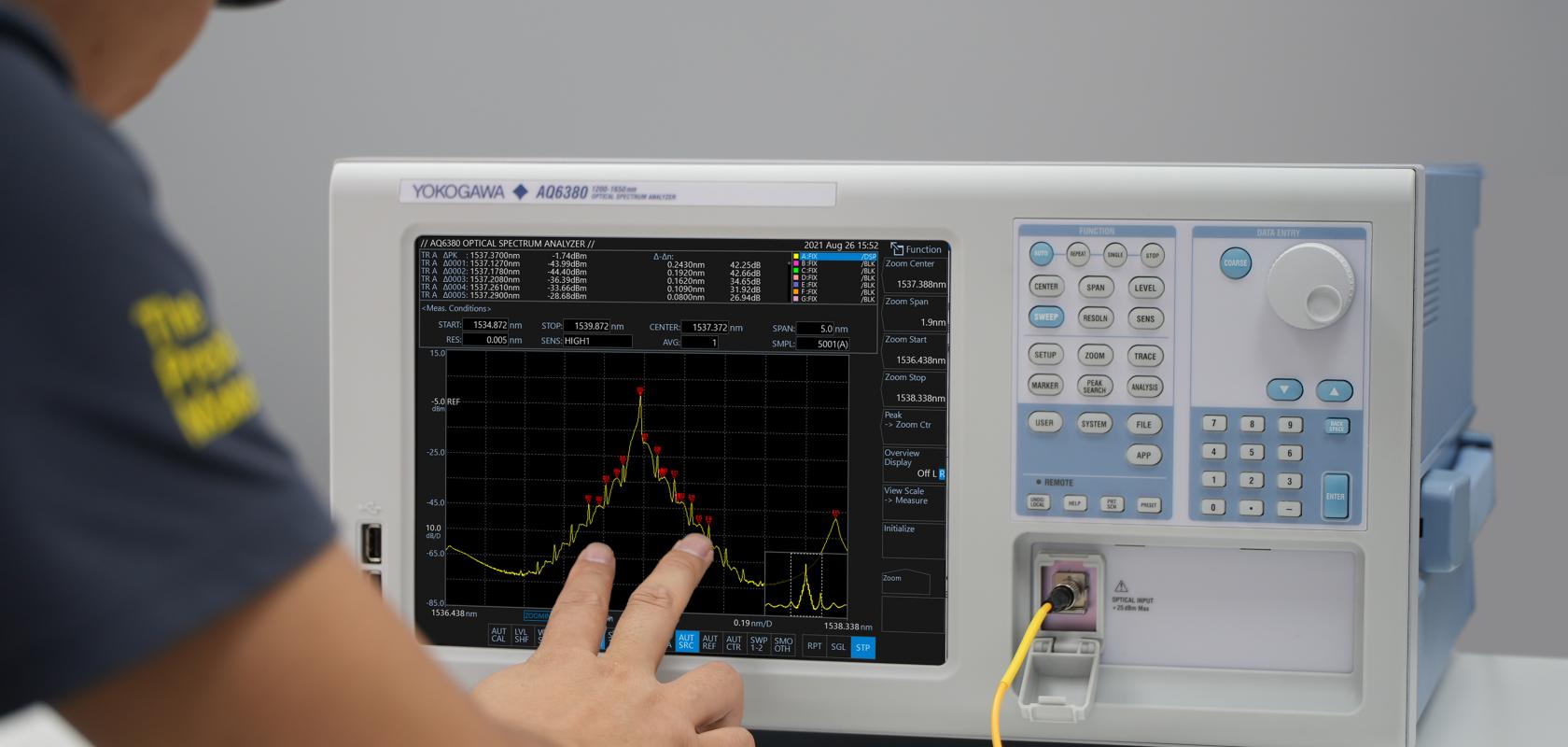Yokogawa has launched a new optical spectrum analyzer (OSA) for researchers developing the next generation of optical communication components.
The Yokogawa AQ6380 OSA offers unequaled optical performance to allow engineers and scientists to develop and improve the speed, bandwidth and quality of the next generation of communication networks, while its ease of use ensures it can be operated quickly and efficiently.
It has optical wavelength resolution down to 5pm, allowing optical signals in close proximity to be clearly separated and accurately measured. It also allows for waveforms such as modulation side peaks in the laser spectrum to be accurately visualized.
The wavelength range is 1200 to 1650nm, allowing one unit to meet diverse wavelength measurement needs. With the ability to alter the wavelength resolution from 5pm to 2nm, a wide range of applications can be supported, from narrowband peak/notch measurements to wideband spectral measurements.
To maintain consistently high accuracy, the AQ6380 features on-board calibration based on a built-in light source. Wavelength calibration is automatically performed at set intervals by switching the optical path with an internal optical switch.
Another important parameter in optical waveform analysis is close-in dynamic range, defined as the difference in power level measured from the peak of the signal to the noise at a specific distance from the peak wavelength. The AQ6380 features a newly designed monochromator with sharper spectral characteristics t, achieving a close-in dynamic range of up to 65 dB. The result is that signals in close proximity can be clearly separated and accurately measured.
The new monochromator also offers very high stray light suppression, an important criterion in optical measurement. For example, in situations such as laser SMSR measurement, where several optical spectra with different levels are measured at the same time, the stray light may interfere with the measurement. The AQ6380 offers a best-in-class stray light suppression value of 80 dB.
Fast measurement speed is another major benefit, with the ability to capture data points in 0.23 seconds compared to 5.4 seconds for the existing model (AQ6370D) in certain conditions.


